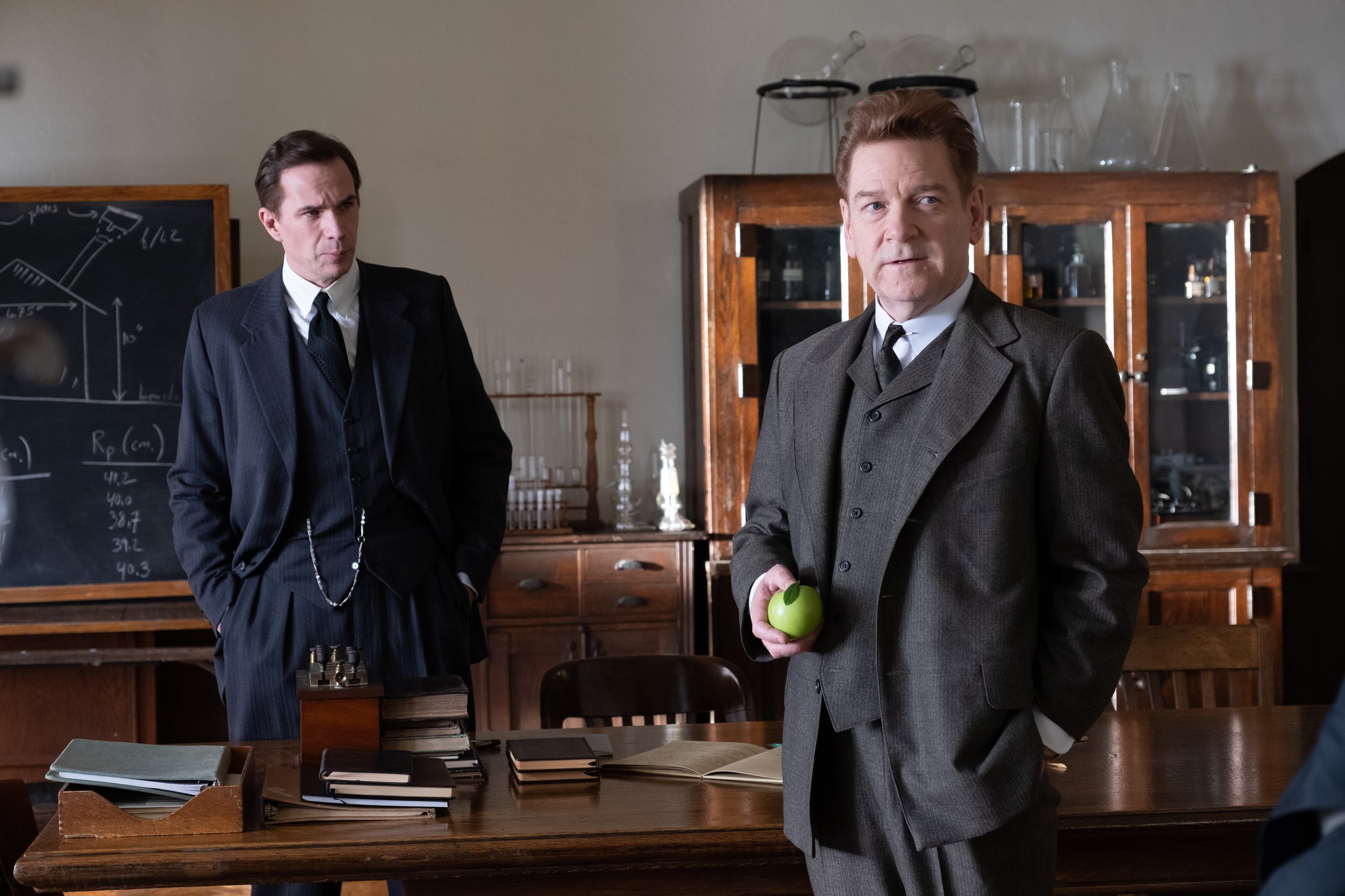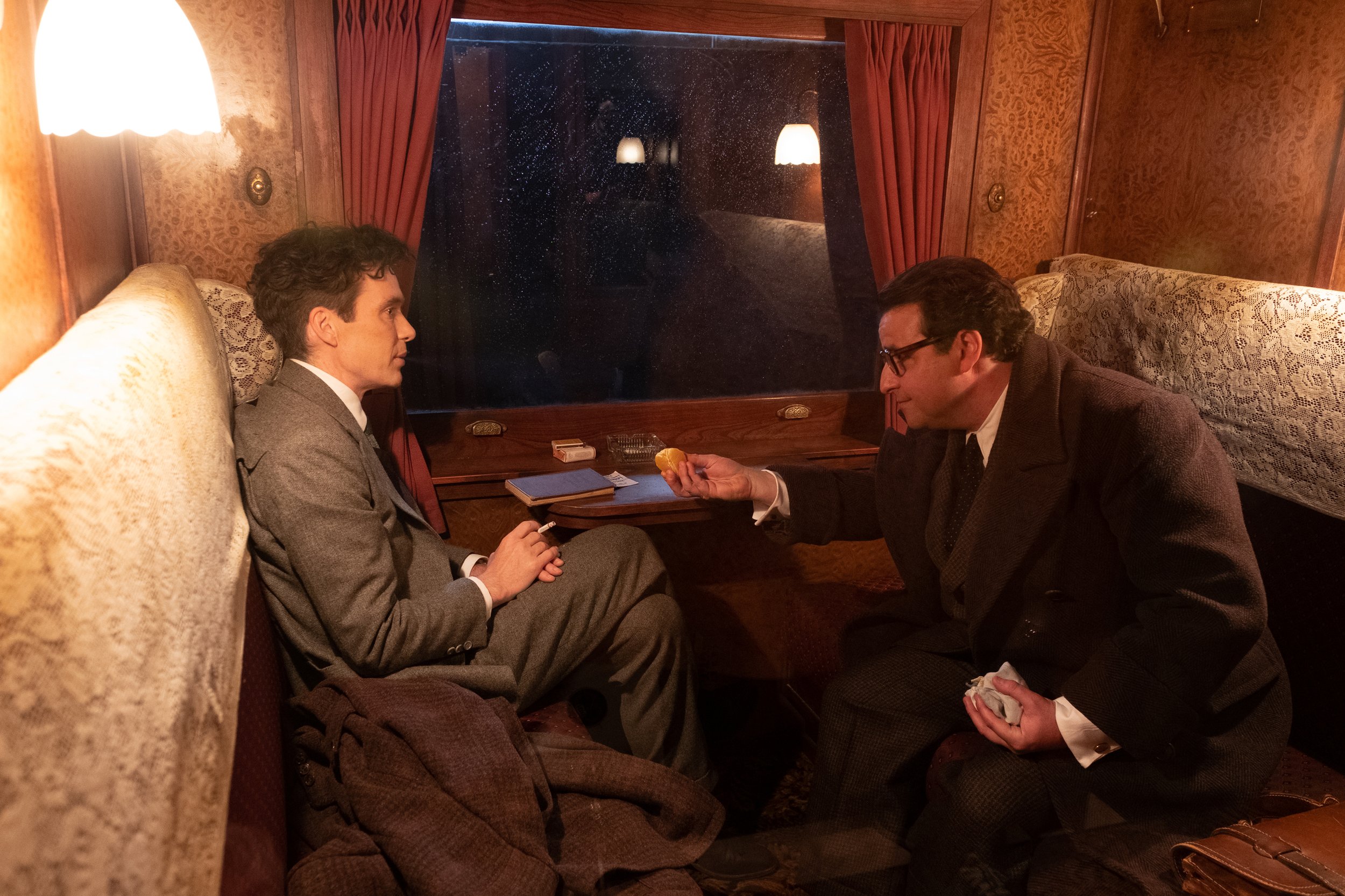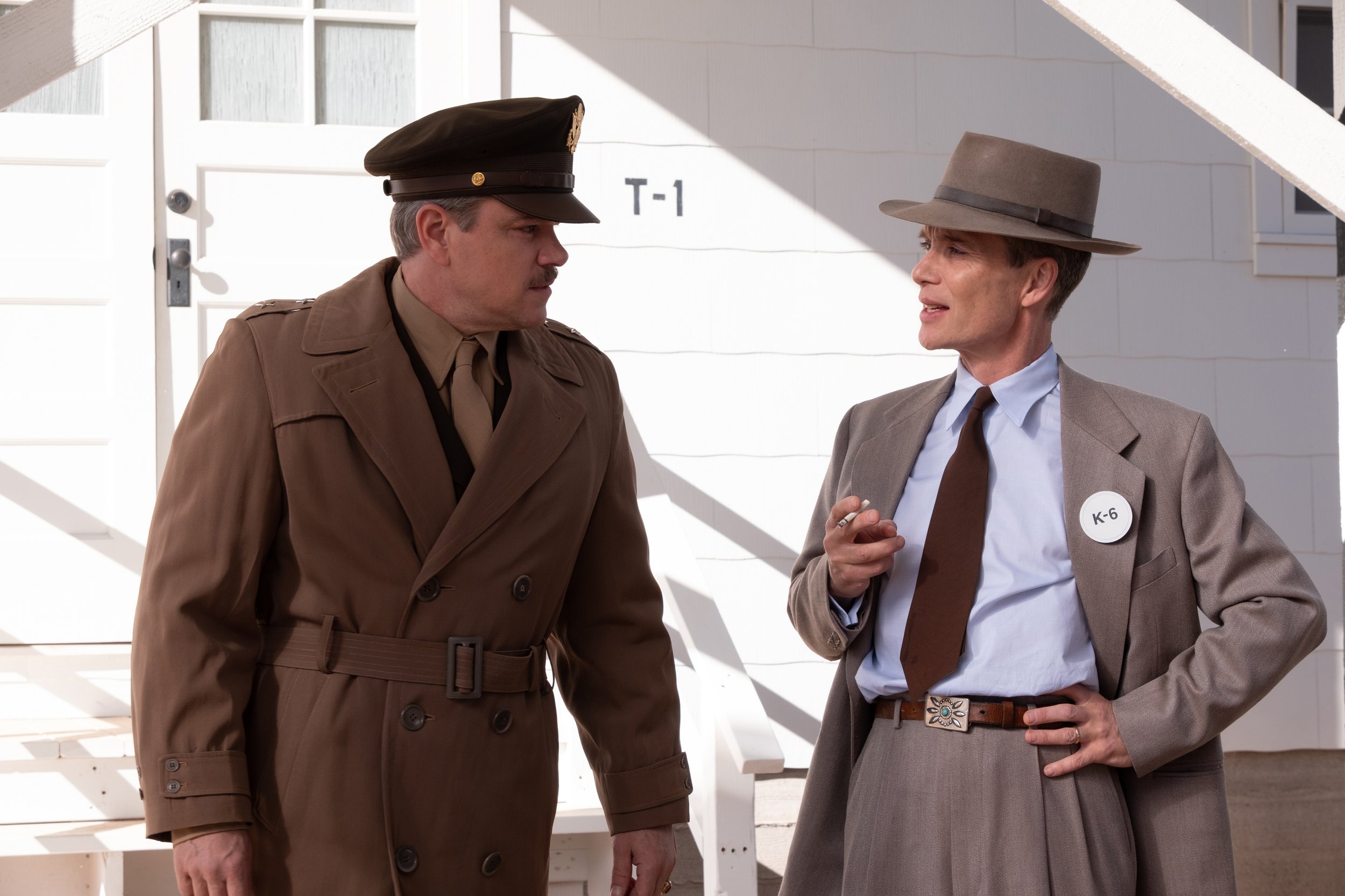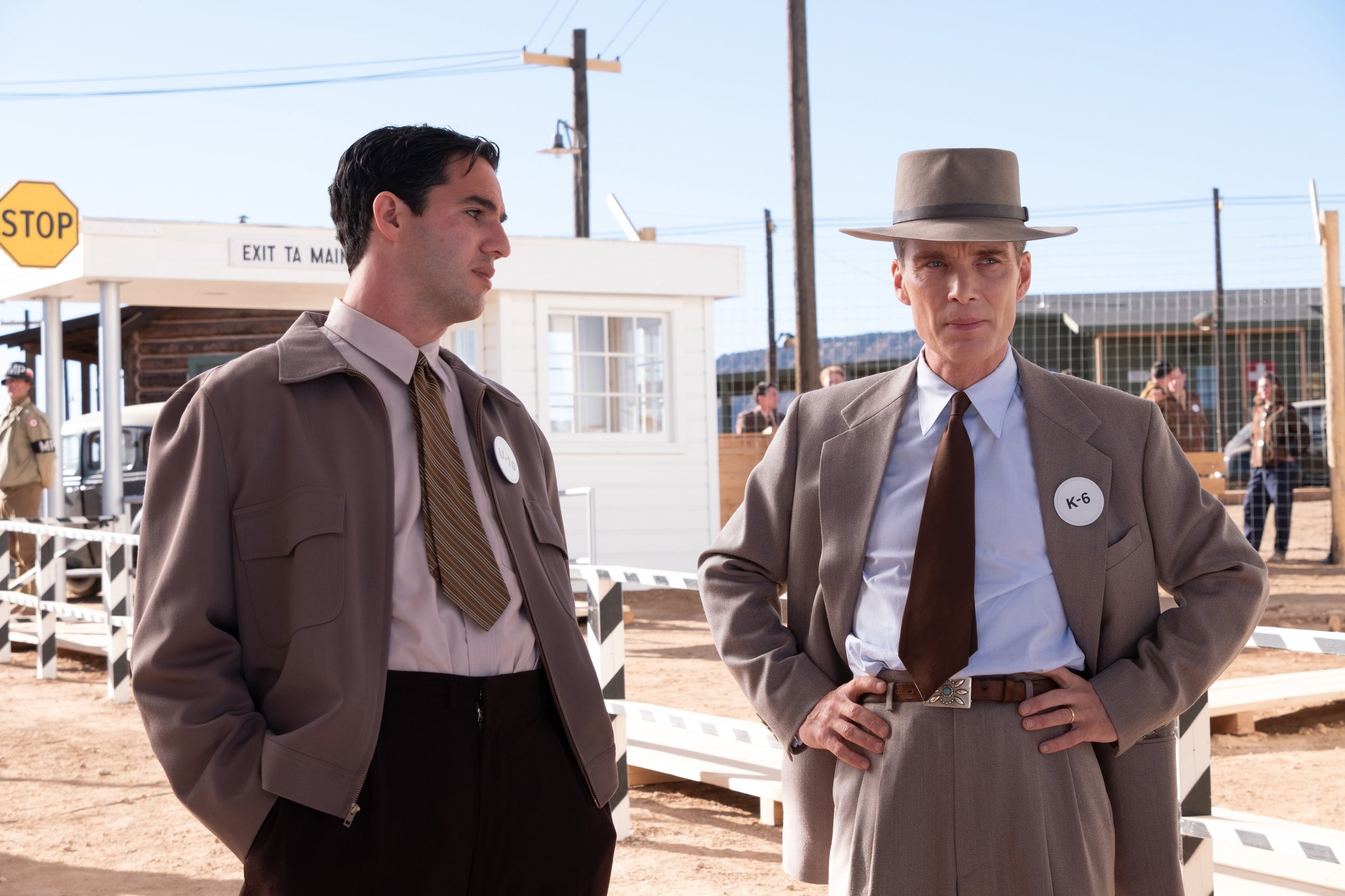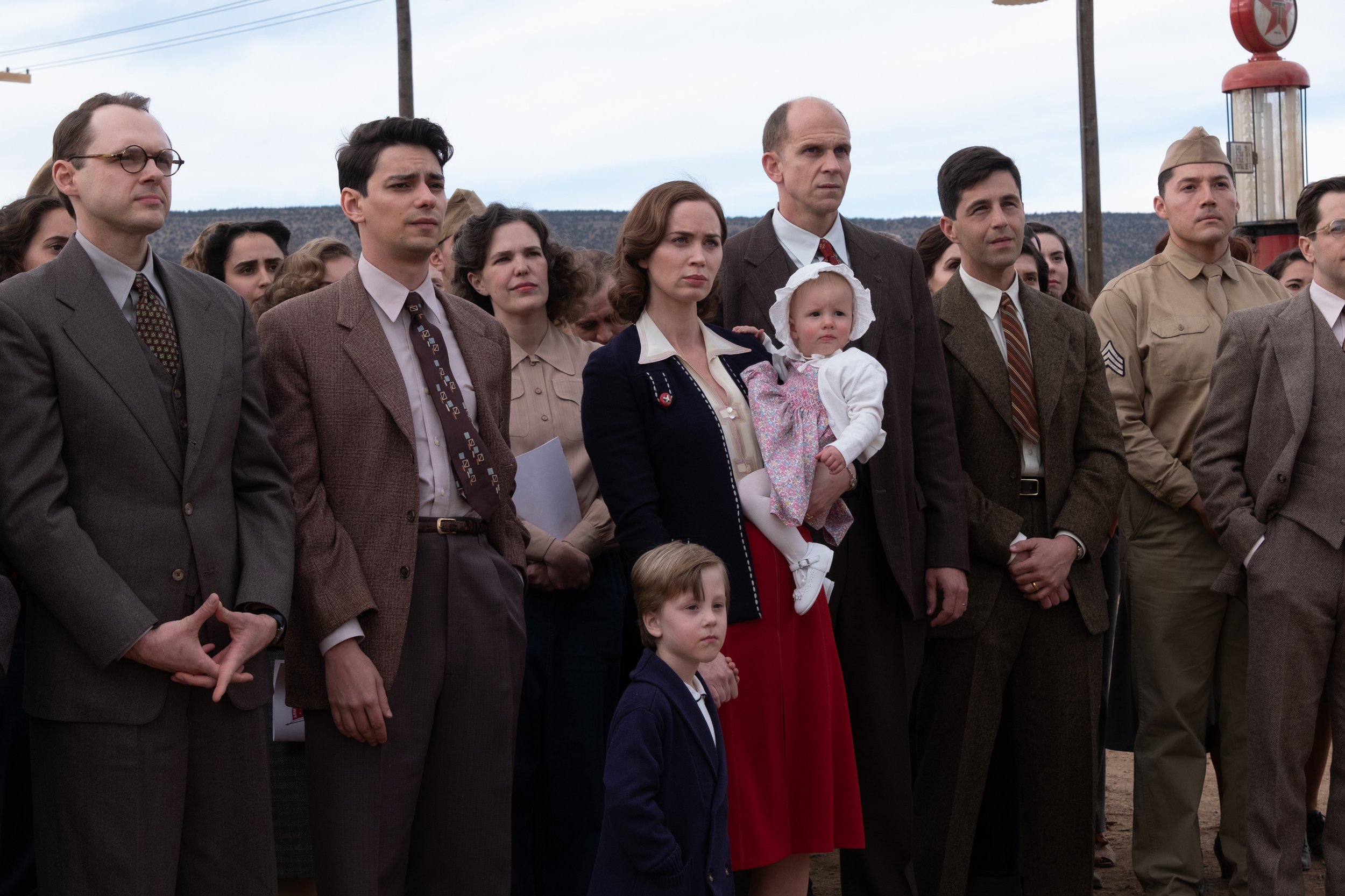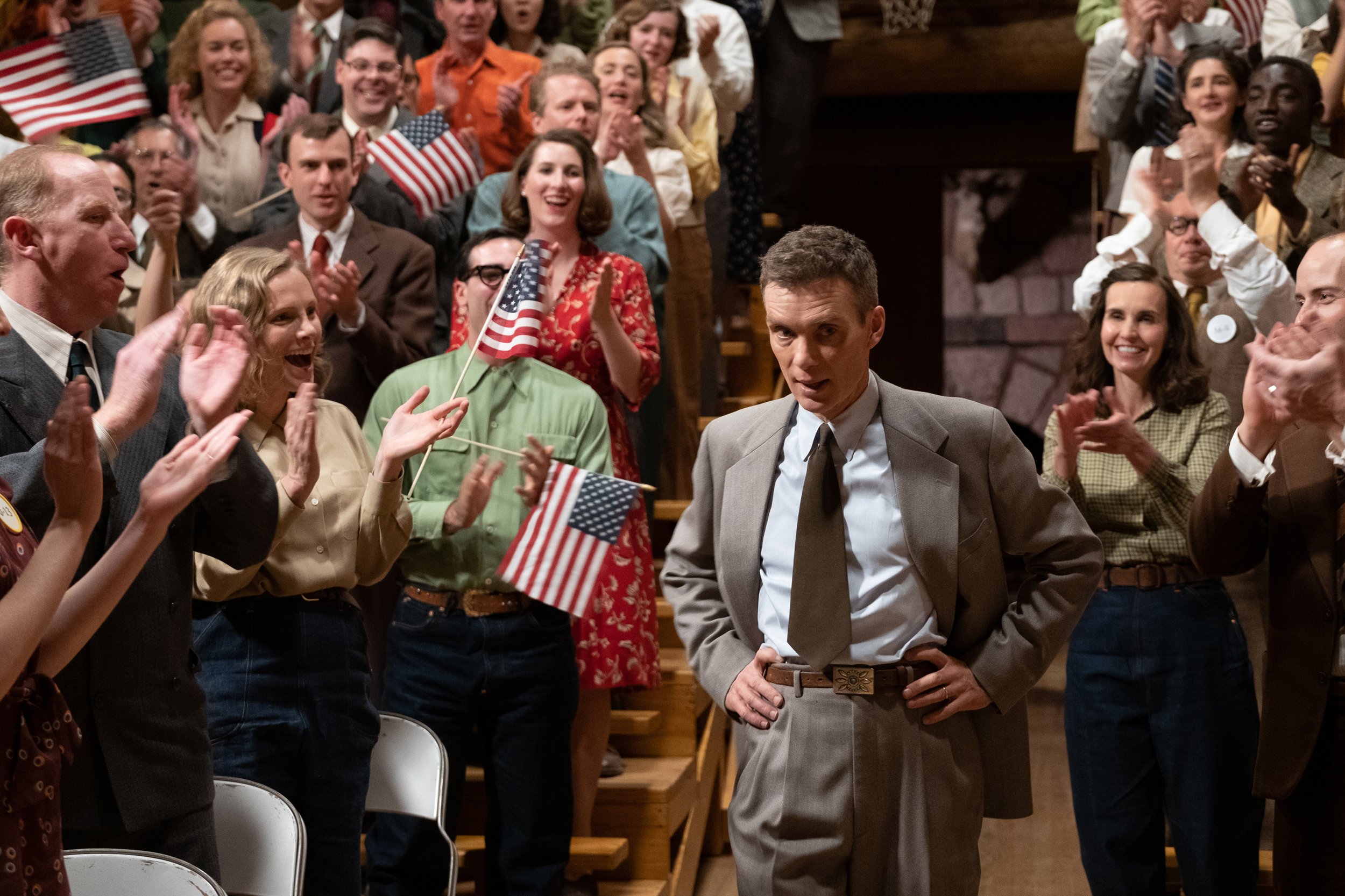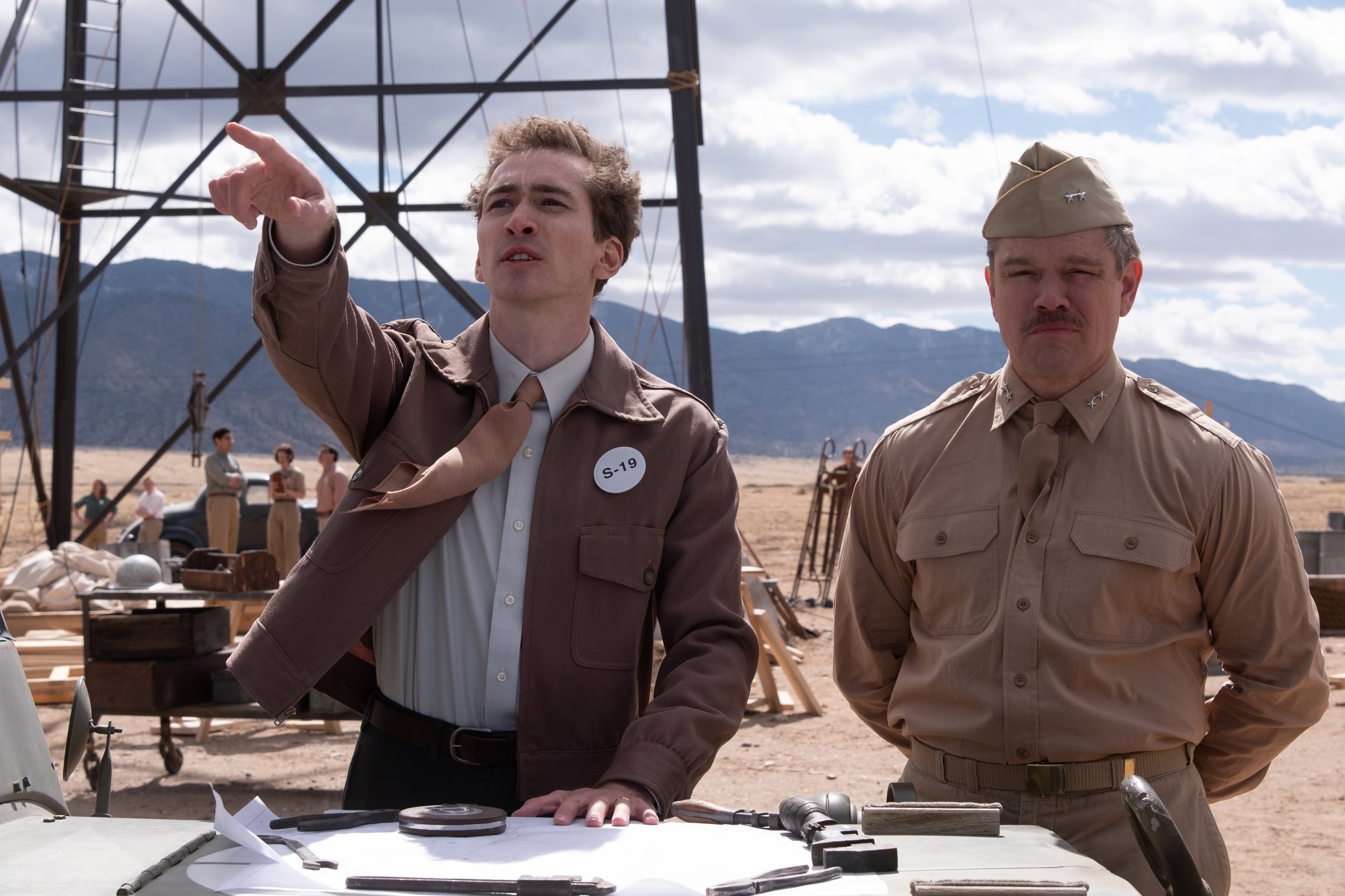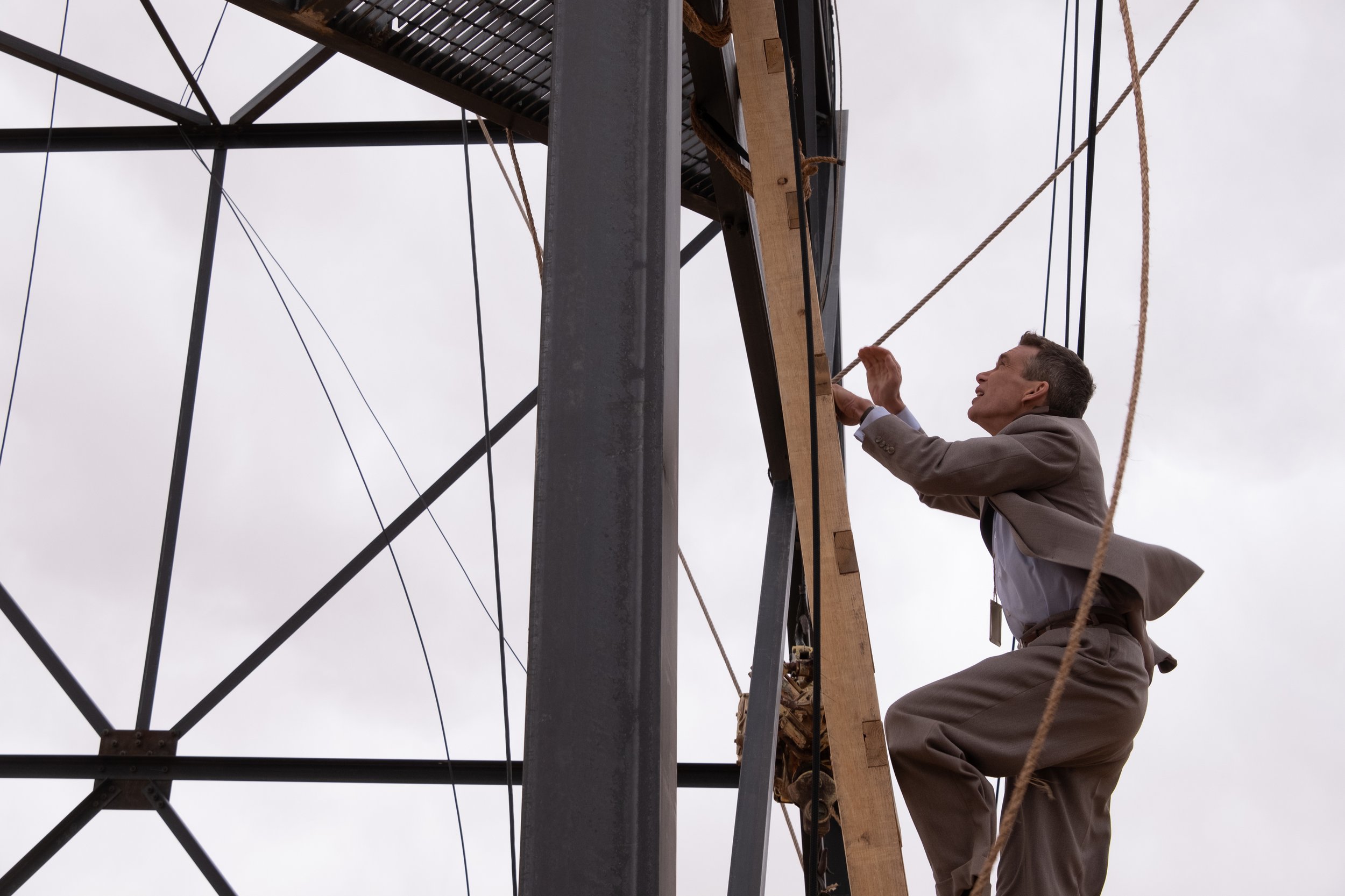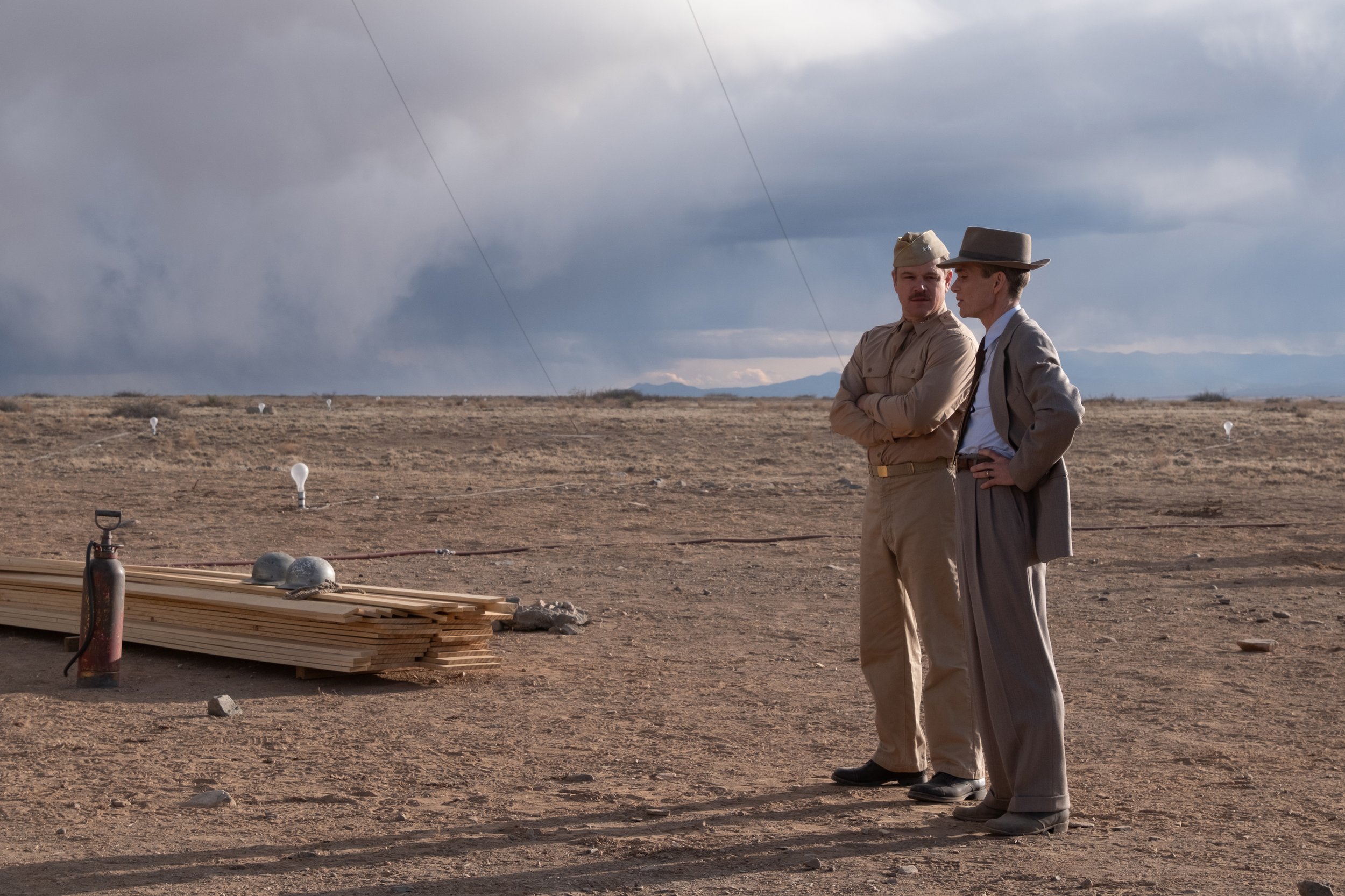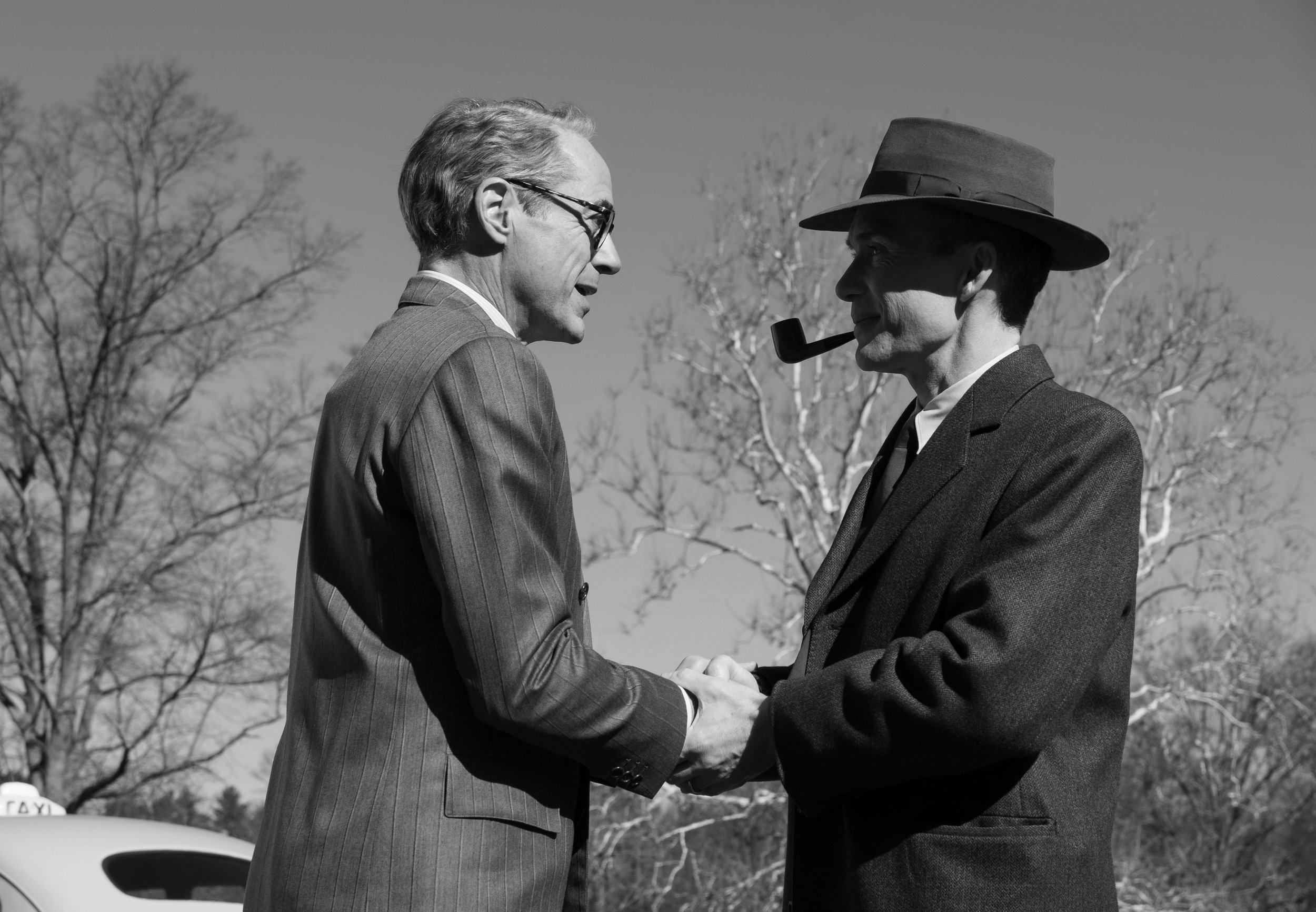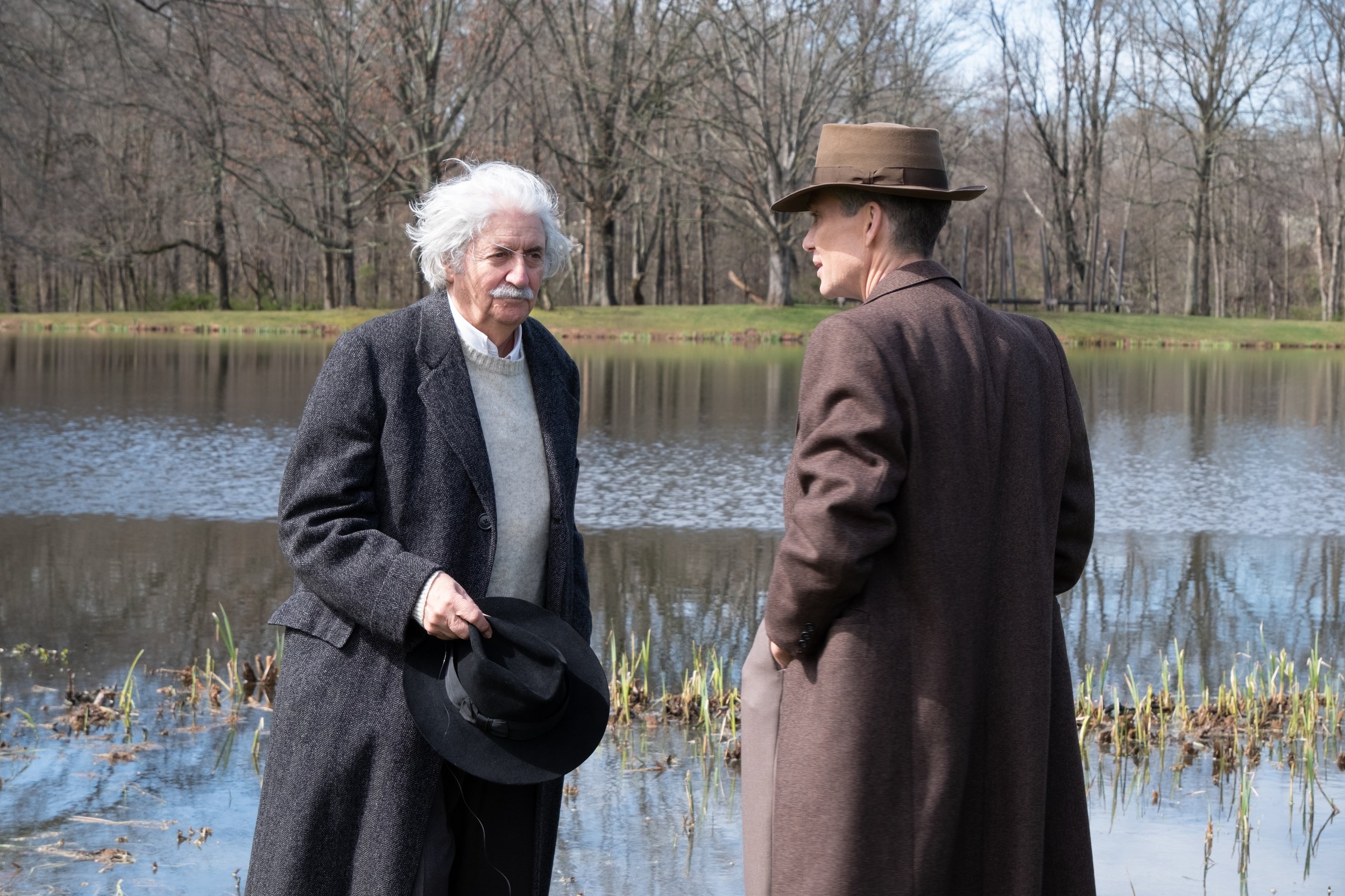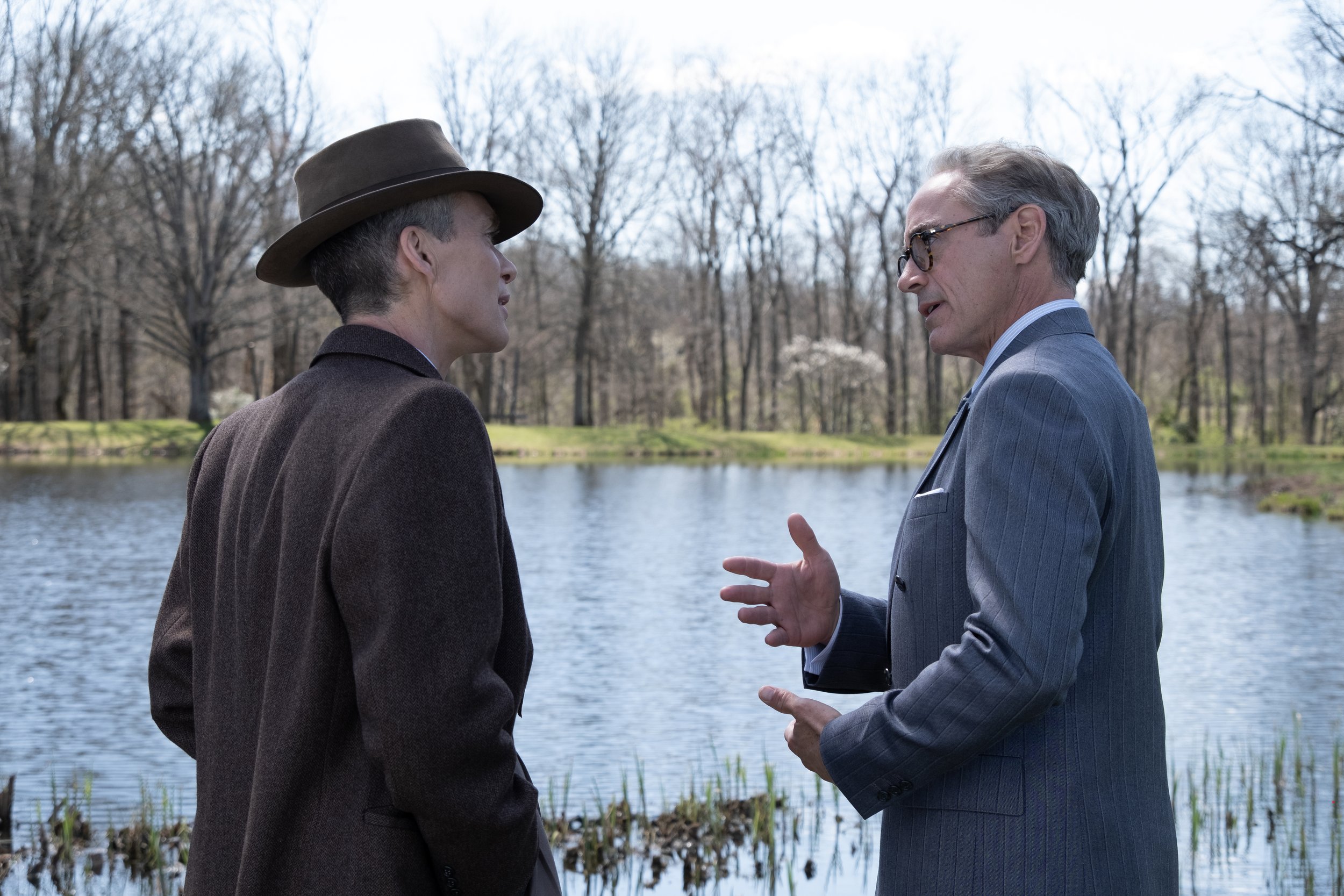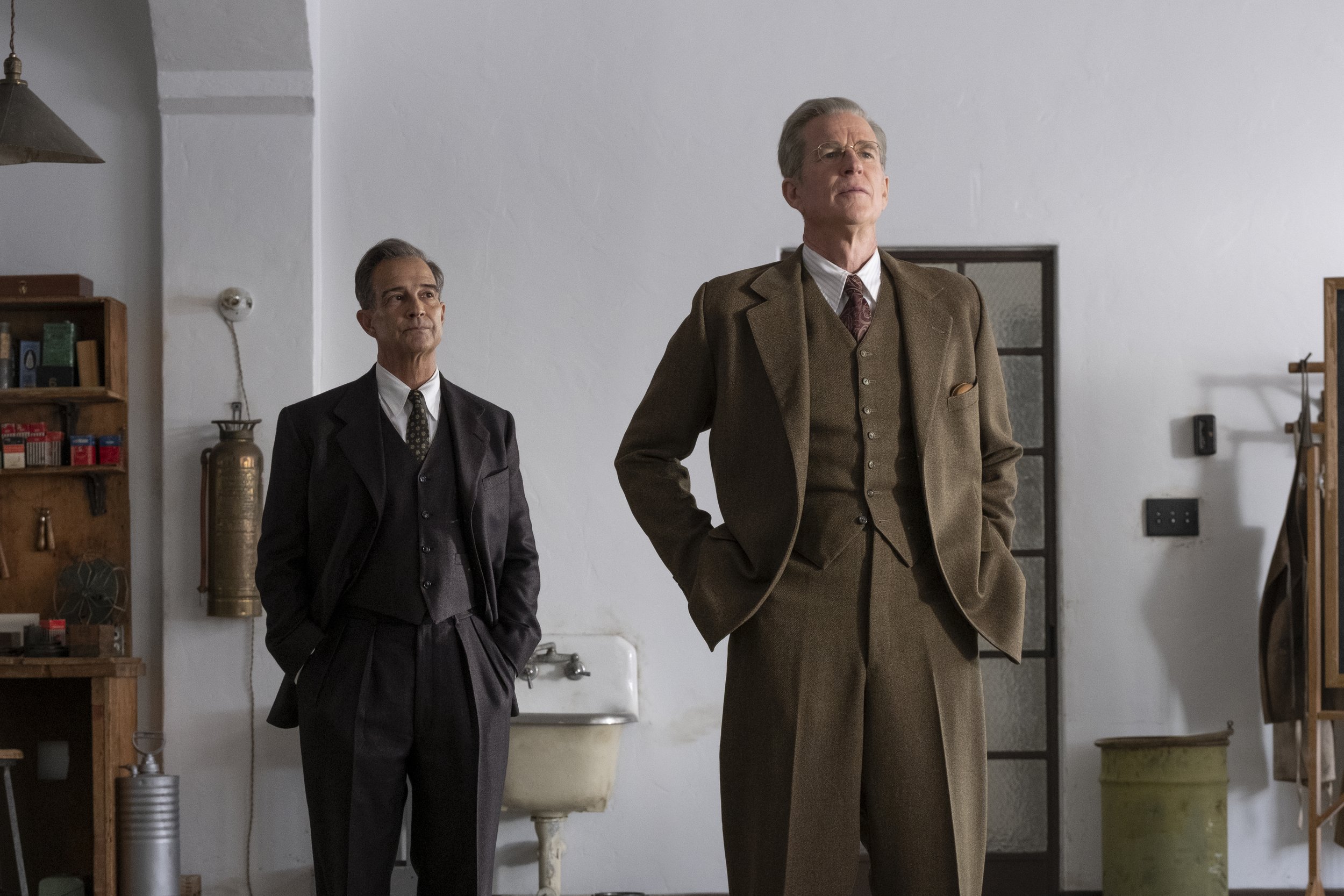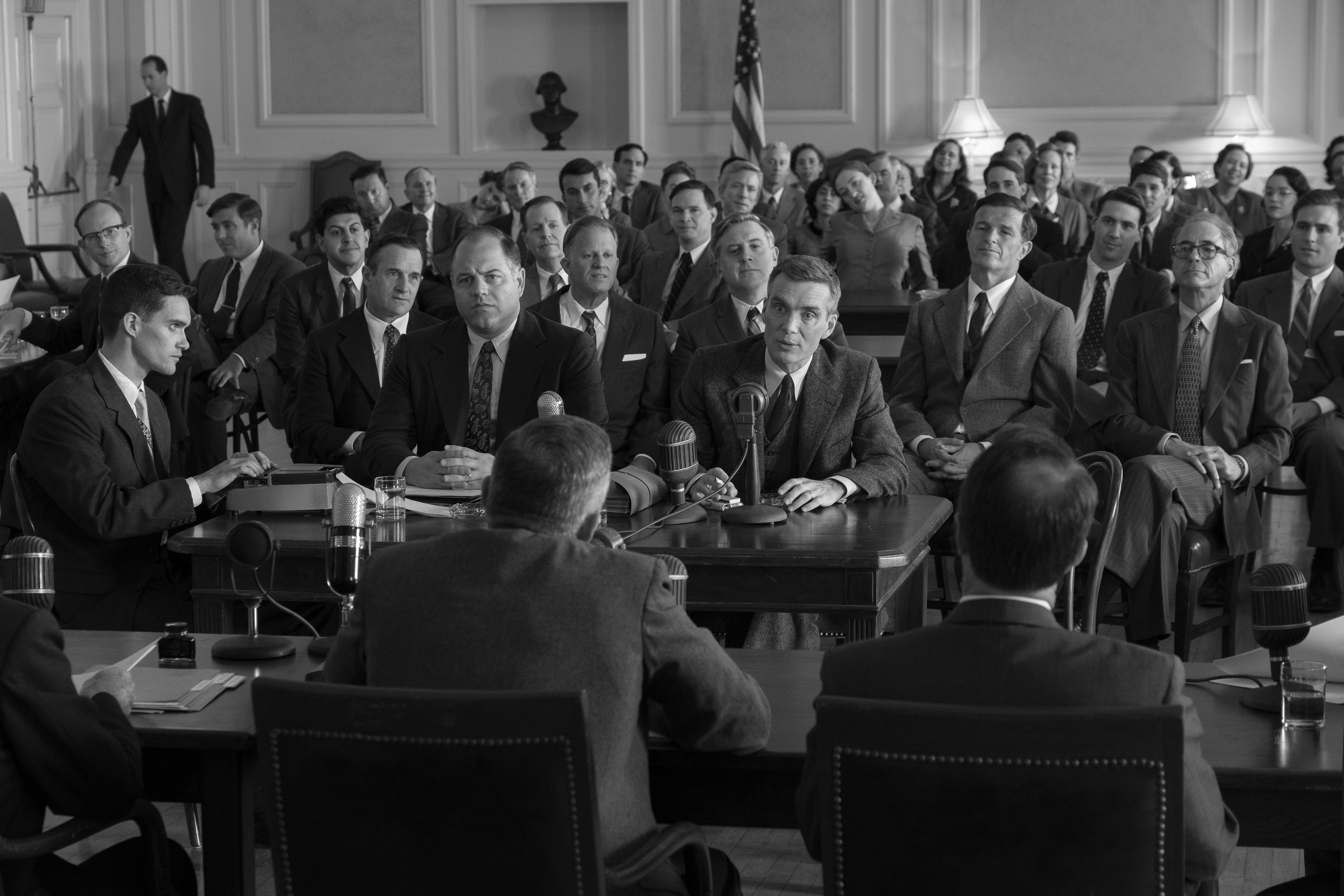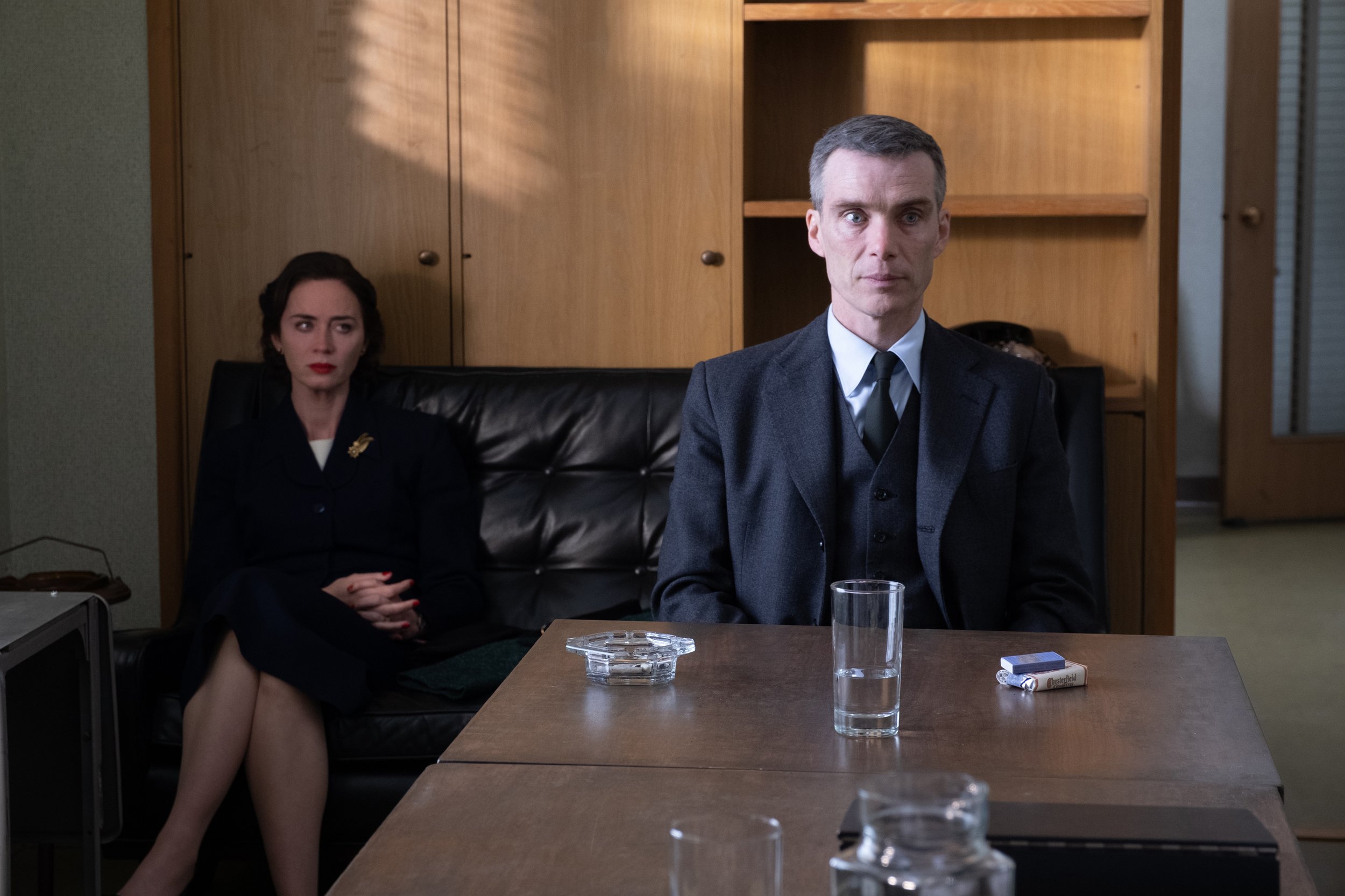MOVIE REVIEW: Oppenheimer
OPPENHEIMER– 3 STARS
Everywhere you look inside and outside of Christopher Nolan’s Oppenheimer, there are layers upon layers of risks. The film’s depicted history of scientific discovery and governmental decisions leans heavily on creating tension in mere ideas, let alone when the previously theorized achievements come alive. Likewise, shooting a massive and deadly serious three-hour historical epic in large format film and dropping it in the sunny skies of the summer box office season (and on the heels of a pair of entertainment industry strikes, no less) comes with its own set of daunting prospects. Let’s talk about those.
Based on the very comprehensive Pulitzer Prize-winning biography American Prometheus: The Triumph and Tragedy of J. Robert Oppenheimer by Kai Bird and Martin K. Sherwin, Oppenheimer follows the academic origins and national service career of J. Robert Oppenheimer, played by longtime Nolan collaborator and Peaky Blinders star Cillian Murphy. The film introduces Robert in the late 1920s along his international path of meeting and collaborating with formative Nobel Prize winners (including Kenneth Branagh’s Niels Bohr, James D’Arcy’s Patrick Blackett, and Matthias Schweighöfer’s Werner Heisenberg) and storied institutions before he settles on a professor position at UC-Berkeley introducing quantum physics and quantum mechanics to the country’s academia next door to yet another Nobel Prize winner in Ernest Lawrence (the long-lost Josh Hartnett).
LESSON #1: THE RISKS OF PARTNERSHIPS, COLLABORATIONS, AND ASSOCIATIONS– These early segment arcs of burgeoning clout in Oppenheimer begin to tie threads of associations for the central figure. Outside of his university work, Oppenheimer’s leftist politics and anti-fascist actions nearly match his more extroverted brother Frank (Dylan Arnold of TV’s You) have him pegged as a potentially dangerous communist, especially when he begins a friendship with translator Haakon Chevalier (House of the Dragon’s Jefferson Hall) and a torrid extramarital affair with Jean Tatlock (Florence Pugh of Don’t Worry Darling), a registered member of the Communist Party of the United States of America.
Taking this hazardous risk of collaborations further is the arduous undertaking of the famous Manhattan Project during World War II that was tasked to Oppenheimer by General Leslie Groves (Matt Damon, stepping up from Paul Newman’s portrayal of the figure from 1989’s Fat Man and Little Boy). Plenty of folks in the U.S. government questioned trusting such a dangerous and important project demanding security and efficiency on the shoulders of a more-theoretical man like Oppenheimer and his leanings. The effort to win the war was one thing, but the scientific risks were exponentially more grave.
LESSON #2: THE RISKS OF KNOWLEDGE AND SCIENCE– Oppenheimer loves to repeat the mantra dialogue of “Theory will only get you so far,” meaning that lofty and dangerous hypotheses must be tested and confirmed before being handed over to a larger agency or, worse, unleashed on citizens and soldiers during wartime. The urgent race to beat the Germans to the atomic bomb punch rushed the engineered mashup of volatile explosives and rare radioactive elements that had the chance to ignite the entire planet’s atmosphere on fire instead of its intended target. Like the novel, the movie aptly and allegorically links this leadership peril of Robert to the cautionary Greek myth of Prometheus with a misinterpreted drizzle of the Bhagavad Gita’s Hindu scripture of “Now I am become Death, the destroyer of worlds.”
LESSON #3: THE RISKS OF WEAPONS OF MASS DESTRUCTION– Oppenheimer spends the bulk of its sizable production design work by Ruth De Jong (no stranger to the desert after Nope) recreating the isolated base at Los Alamos, New Mexico and building suspense towards the famous Trinity test that would confirm all their scientific confidence or fears. As many know, the result of the three-year and $3 billion Manhattan Project was the development of the first weapons of mass destruction. That technology, heroically credited to Robert, became something that could now be replicated, stolen by espionage, or developed en masse here and abroad, changing military might forever. After the bombings of Hiroshima and Nagasaki, the gravity of his work’s outcomes weighed heavily on Oppenheimer where he advocated in the 1950s to avert nuclear proliferation and avoid an arms race and received harsh judgment for expressing divergent honest opinions.
For its three hours, Oppenheimer takes a clandestine route to portray these behind-the-scenes personal and professional relationships of the titular figure. The film uses two main settings as plot moorings to present, rehash, and expose all the supposed skeletons in everyone’s closet. The first is the closed-door 1954 security hearing where Robert, his wife Kitty (Emily Blunt, in the unforgiving the wife-and-mother-at-home slot), and the parade of project partners from his past are badgered with questions before a kangaroo court led by Jason Clarke’s Atomic Energy Commission special counsel Roger Robb. The second setting is five years later during the 1959 U.S. Senate hearings for the appointment of former Atomic Energy Commission chairman Lewis Strauss (an excellent Robert Downey, Jr.) as the Secretary of Commerce in President Eisenhower’s Cabinet. Shot in black and white to set it apart, Strauss and his aides and allies (including renewed bites at the apple for Solo’s Alden Ehrenreich and Chronicle’s Dane DeHaan) are circling the wagons to bury Oppenheimer further after years of revealed confrontational history.
LESSON #4: THE RISKS OF STORYTELLING AND FILMMAKING– This is where Christopher Nolan takes over the saga’s heft and adds his own talent and hubris. Rather than a traditional chronology, Oppenheimer twists this lengthy unrolled scroll of powerful history and folds it like origami with Nolan’s penchant for toying with multiple timelines. The director’s cast and his trusty 4-time cinematographer Hoyte van Hoytema stage a host of meetings and character interactions across decades that showcase the troublesome bonds and the pensive issues that would plague the rest of Robert’s life (and the movie).
This overall presentation of technique in Oppenheimer is both a triumph and a drawback for audiences. From a performance standpoint, Oppenheimer granted a great deal of latitude to its actors to soak themselves into the ranges of risks and obsessions seen on screen. Make no mistake. Oppenheimer is the best lead performance of Cillian Murphy’s underappreciated career and the most solid work we’ve seen Robert Downey Jr. offer outside of the MCU in decades. Both are fractured men with different slants of stoicism and watching the two either embrace or combat the pressures on their characters is fascinating. Murphy and Downey have deservedly entered the early awards conversation and could be joined by the little infusions of heart that come from Emily Blunt, Benny Safdie, and David Krumholtz from this stacked cast.
To put it all together, Nolan and his Tenet editor Jennifer Lame then channel a little bit of Terrence Malick with a menagerie of hyper-edited insert shots of raw nature or character flashbacks that likely pace the film at the same furious 3.1 average shot length clip as his career average, one that is dubiously only a tenth of a second slower than maligned mayhem of Michael Bay. Chew on that math, cinephiles and FilmBros. More often than not, the frenetic flickering backed by a booming sound design and the blaring score of Black Panther Academy Award winner Ludwig Göransson makes Oppenheimer feel like maddening noise (commonly drowning out dialogue like in Tenet) more than an intoxicating symphony of high suspense, fascinating nuance, lofty consequences, and warranted comeuppance.
LESSON #5: WE CRAVE RISKS– Don’t get me wrong. Risks are wonderful. Film audiences crave them and piss and moan when they’re absent. It’s because risks and stakes engage the emotional responses and escapist feelings that come with these big screen storytelling vacations. From nicknamed childhood sleds to a Polaroid picture clue to a crime and millions of little things in-between, great movies can take minute details, events, and settings and amplify them to matter to an audience and evoke invested feelings.
That’s where Oppenheimer overshoots. The amount of included risks within the movie centering around a crucial turning point in world history should be infinitely compelling, especially when crafted with off-the-scale production efforts. Somewhere, outside of small flickers, a fiery human heart is absent from all the artificial explosives. Rattle us. Scare us. Inspire us. Instead, it’s awfully hard to get hot-and-bothered about the bottom of Oppenheimer’s rabbit hole relying on a boardroom inquiry to renew someone’s security clearance and a congressional hearing to approve a Cabinet position appointment.
LESSON #6: AT SOME POINT, THE RISKS NEED TO MATTER– After three hours and one of Nolan’s signature final-five-minute bow-tying crests, that’s it. Call those two central arcs and settings a boiled-down oversimplification of Nolan’s epic all you want, but that’s precisely where the touted risks of this endeavor have to matter and escalate to something bolder. Look at Oliver Stone’s JFK for an impact comparison and the use of its cinematic bells and whistles. A viewer should leave Oppenheimer convinced of depicted truths and dying to know more, not merely nodding “Well, that was that” like they watched a theatrical Wikipedia page summary.
Even with all of its impressive pomp and noise, nothing dramatically radioactive is going to ping your internal Geiger counter higher than a nominal level. And that, like Dunkirk and Tenet before this, is another missed opportunity from one of the best filmmakers in the industry. There’s a pair of lines offered to our main character in Oppenheimer that mirror some of the pushback analysis to Nolan’s good standing. They read, “Don’t alienate the only people in the world who understand what you do. You may need them.” The Brit has his hardcore devotees, but he might be losing more of the rest with each exhausting effort.
LOGO DESIGNED BY MEENTS ILLUSTRATED (#1135)


